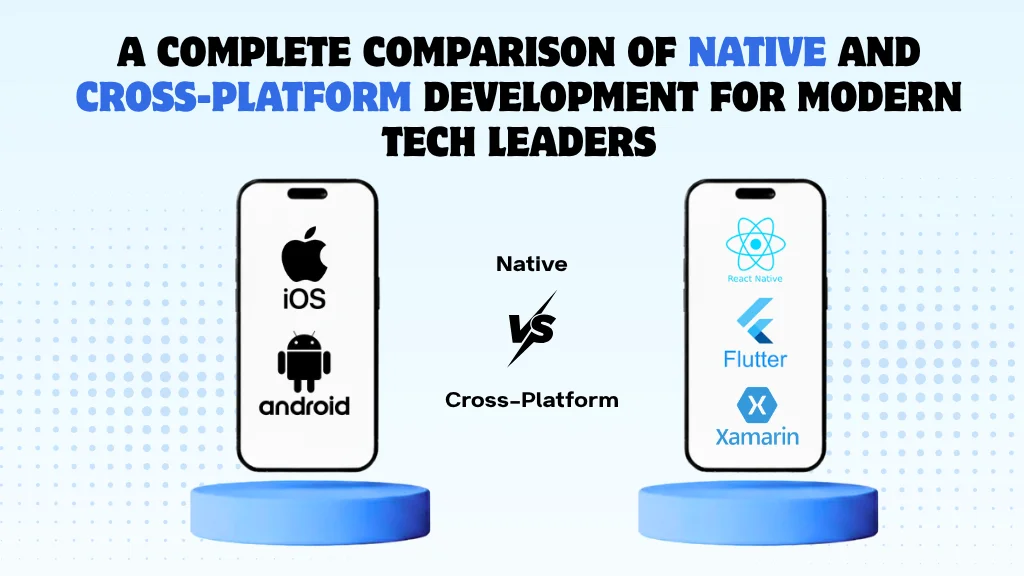| Category | Where Angular Excels | Where Vue Excels |
|---|---|---|
| Performance & Rendering | Angular's new Signals drastically cut down on unnecessary change detection and pair beautifully with Deferrable Views, allowing parts of the UI to load only when needed. | Vue's fine-grained reactivity and lightweight runtime make it incredibly fast for small and mid-sized apps. The result is snappy UI updates and faster initial loads. |
| Server-Side Rendering (SSR) | Angular now offers production-grade SSR and hydration, including streaming responses and pre-rendering, which improve Time-to-Interactive and SEO. | Nuxt 3 and its islands architecture let Vue apps partially hydrate components — speeding up rendering without overloading the client. |
| Architecture & Structure | Angular's prescriptive patterns guide teams toward best practices automatically, helping large organizations maintain code consistency and performance without deep optimization work. | Vue's compiler-optimized rendering and built-in tree-shaking keep code lean. Teams get structure where it matters, without feeling boxed in. |
| Scalability & Maintainability | Built with large teams and enterprises in mind — Angular's enforced structure and TypeScript-first design make scaling across multiple developers straightforward. | Nuxt's modular design and Vue's flexibility allow smooth scaling from small MVPs to production apps without rewriting core logic. |
With smart code-splitting and modern tooling, Angular can achieve competitive LCP and interaction metrics even on mid-range devices. Vue scales effectively to complex applications as well—but teams must enforce discipline around routing, state management, and module boundaries to maintain predictable performance as the codebase grows.
Key Takeaways
- Angular vs Vue performance is comparable in well-architected projects. Angular favors predictable performance at scale, while Vue excels at quick wins and smaller bundles.
- For edge-first architectures, Nuxt 3 provides a ready-to-use, high-performance path today. Angular can compete via Universal and community-driven tools like AnalogJS, though it may require more configuration.
Scalability and Architecture: Enterprise vs Product-Led Growth
Scalability isn't just about handling more users — it's about how well yourteam, codebase, and processes grow together. Angular and Vue both scale beautifully, but their approaches reflect different philosophies: Angular is built for enterprises that need order and consistency, while Vue empowers product-driven teams that thrive on speed and adaptability.
| Aspect | Angular's Strengths for Enterprise App Development | Vue's Strengths for Product-Led Growth |
|---|---|---|
| Architecture & Structure | Angular's opinionated design, built-in dependency injection, and modular approach create a strong architectural foundation. This makes it easier to manage multiple teams working in parallel without stepping on each other's toes. | Vue's progressive architecture allows teams to start small—integrating into existing systems or MVPs—and expand naturally as complexity grows. Perfect for startups and fast-moving product teams. |
| TypeScript & Code Quality | Angular's first-class TypeScript integration enforces strict typing, safer refactoring, and cleaner API evolution— especially useful in distributed enterprise teams. | Vue supports TypeScript beautifully through Volar and Composition API, but it's optional. This gives smaller teams flexibility to choose how strict or lightweight their setup should be. |
| Ecosystem & Tooling | Angular provides an integrated ecosystem — Angular Material, CDK, RxJS, NgRx, CLI generators, and Nx for monorepos — offering end-to-end consistency and tooling support for massive codebases. | Vue's ecosystem is diverse and flexible, powered by tools like Nuxt 3, Pinia, and Nx for scaling, plus UI libraries like Vuetify, Quasar, Element Plus, and Naive UI that speed up front-end delivery. |
| Scaling Philosophy | Angular bakes scalability into its defaults — clear structure, strong conventions, and built-in tools reduce decision fatigue for large teams. | Vue lets you define your own conventions. It scales effectively, but teams need to establish internal best practices for consistency and maintainability. |
Ecosystem, Tooling, and Community Support in 2025
A framework is only as strong as the ecosystem that surrounds it. In 2025, both Angular and Vue offer mature,well-integrated toolchains — but they cater to slightly different styles of development. Angular leans towardenterprise reliability and structure, while Vue focuses on speed, flexibility, and modern simplicity.
| Category | Angular Ecosystem | Vue Ecosystem |
|---|---|---|
| Tooling | Angular now feels much lighter thanks to the Vite builder, which powers fast dev servers and instant hot reloads. The Angular CLI, TestBed, Jest/Vitest, and Cypress or Playwright round out a complete stack for building, testing, and deploying apps efficiently. | Vue runs natively on Vite — the tool it helped popularize — delivering instant startup and lightning-fast HMR. Vitest handles testing, Cypress/Playwright power E2E checks, and Volar provides seamless TypeScript and IDE integration. |
| State & Data Management | RxJS powers reactive programming and real-time data streams, while NgRx brings predictable, centralized state management to complex apps. It's a proven pattern that scales easily in enterprise environments. | Pinia replaces Vuex with a cleaner, more intuitive API. It keeps state logic simple and supports TypeScript without boilerplate — a win for teams that value flexibility over ceremony. |
| UI Libraries & Components | The combination of Angular Material and the Component Dev Kit (CDK) helps teams deliver accessible, consistent UIs that align with enterprise design systems. | Vue's component ecosystem thrives on variety — frameworks like Vuetify, Quasar, Element Plus, and Naive UI help teams move fast with ready-to-use, customizable design systems. |
| Framework Extensions | Angular's meta-frameworks like AnalogJS are expanding its SSR and edge deployment capabilities, bringing it closer to modern, hybrid rendering needs. | Nuxt 3 is now a polished, production-ready meta-framework. It brings file-based routing, server APIs, hybrid rendering, and with Nitro, smooth deployment to edge environments like Cloudflare Workers. |
| Community & Backing | Backed by Google, Angular offers predictable release cycles, long-term support, and strong enterprise adoption. Its documentation and learning ecosystem remain world-class. | Vue's open-source community continues to grow rapidly, especially in Asia and consumer product ecosystems. It thrives on collaboration and innovation, evolving faster with community-driven contributions. |
TypeScript Support in Vue and Angular
Angular
TypeScript is required for Angular. This makes sure that types are safe, that IDEs are supported, and that refactoring works well. This is especially useful for large domain models or reactive data streams.
Vue
TypeScript is optional in Vue, but it's a great language. With script setup and Volar, developer experience is excellent. Teams can start with JavaScript and add typing over time, which is great for modernizing things step by step.
Learning Curve and Developer Experience
Vue is easier to learn and faster to implement for small teams or newcomers. A small app can reach production readiness in days, not weeks, especially for developers familiar with JavaScript or template-based frameworks. Angular requires a steeper initial learning curve. Mastering dependency injection, RxJS, change detection strategies, and project structure takes time—but the payoff is predictability, maintainability, and guardrails as projects scale.
AI-assisted development note: As AI coding tools become standard, strong type systems and consistent patterns improve AI code generation quality.
Angular benefits from its strict structure and typing. Vue benefits when teams adopt TypeScript and consistent Composition API patterns. In both frameworks, typed design systems and well-defined contracts amplify productivity as AI pair programming becomes part of everyday development.
When to Use Angular or Vue?
If you need to build a big, complicated app that will last, choose Angular.It's great for systems that need to meet strict business requirements, like role-based security, offline access, accessibility compliance, and thorough testing.
When Angular really shines?
You have several teams working on the same codebase, and you need a consistent architecture. You need reactive data streams, real-time dashboards, or heavy data workflows. That's when RxJS becomes your best friend.Your company values SLAs, predictability, and governance that make sure projects are finished on time and according to the rules. If speed and flexibility are more important to you than structure, choose Vue. It's perfect for prototypes, MVPs, and marketing sites that need interactive features and a fast turnaround.
When is Vue also great?
- You want to slowly bring an old app up to date without having to start from scratch.
- You're looking into Nuxt 3 and Nitro for simple SSR or SSG that works on the edge.
Your team likes lightweight frameworks and starts with plain JavaScript. It can switch to TypeScript when it wants to.
Conclusion
Angular and Vue won't be competing in 2025; they'll be making a decision about how to run things. Angular is built for governance, scale, and long-term maintenance. It is structured and uses TypeScript first. Vue: modern, flexible, and fast, and built for progressive, lightweight, and fast deployments. If you're still not sure, make a small proof of concept in both frameworks using the same user stories and performance budgets. Measure build time, bundle size, developer ramp-up, and SSR performance. The right choice will show itself in the data.






